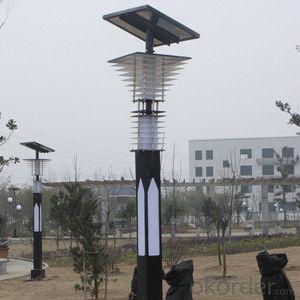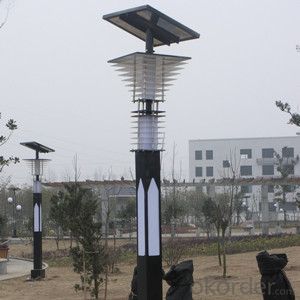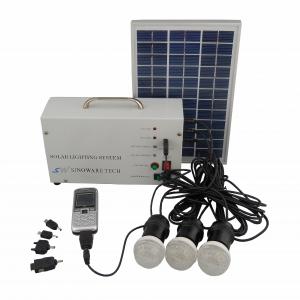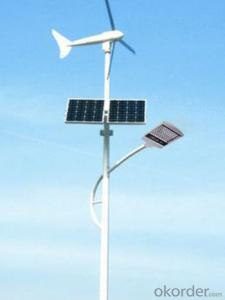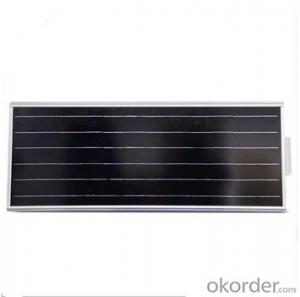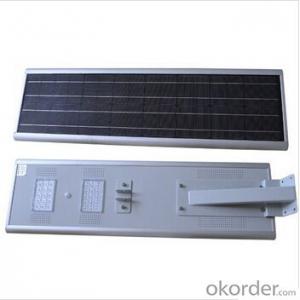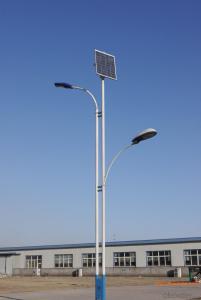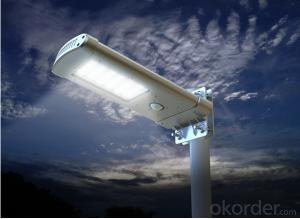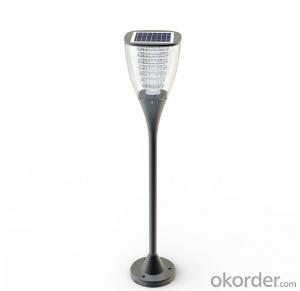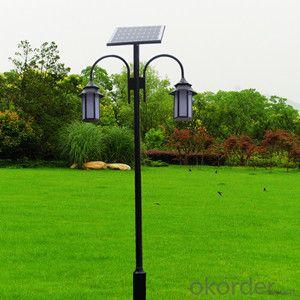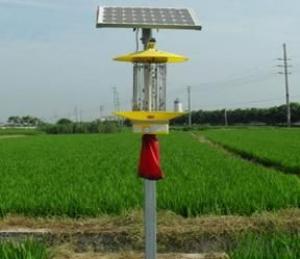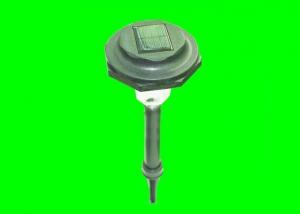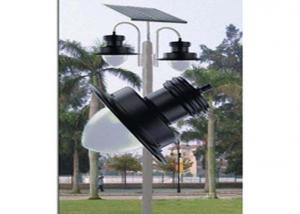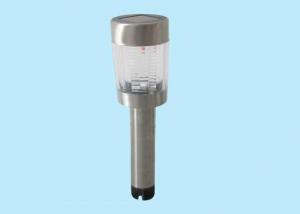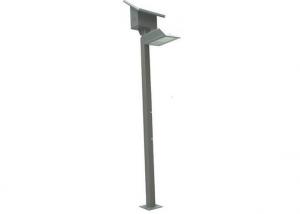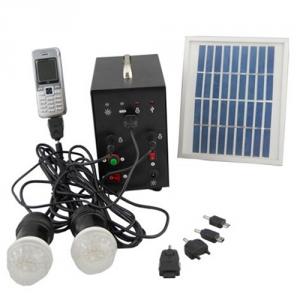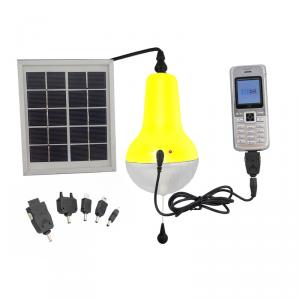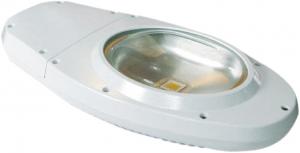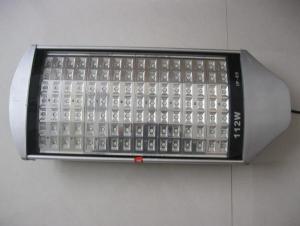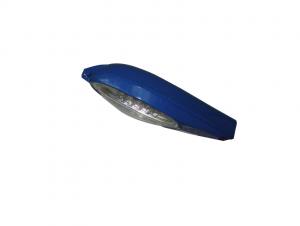Mushroom Solar Light LED Solar Garden Lights JMTT-010
- Loading Port:
- Shanghai
- Payment Terms:
- TT OR LC
- Min Order Qty:
- 10 pc
- Supply Capability:
- 10000 pc/month
OKorder Service Pledge
Quality Product, Order Online Tracking, Timely Delivery
OKorder Financial Service
Credit Rating, Credit Services, Credit Purchasing
You Might Also Like
| No. | Model | Specification | Lifetime | Guarantee | Certificate |
| 1 | Pole | hot zinc-plated steel metallic paint, color could be customized , with all-stainless steel fasteners, 2.8-3.5m height | 20years | 10 years | CE |
| 2 | Lamp | LED ball lamp (color optional), 5W, 7W, 9W | 80000hrs | 5 years | CE. ROHS |
| 3 | Controller | Solar intelligent special controller, with light control switch | 3-5years | 3 years | CE. ROHS |
| 4 | Solar Panel | 20W ~ 60W imported poly-crystalline silicon solar cell module dedicated service life of 20 years | 20years | 5 years | TUV |
| 5 | Battery | 25AH ~ 70AH maintenance-free lead-acid battery, overcharge and over discharge protection, 3 years life. | 7-8years | 3 years | UL |
| 6 | Accessories | Panel bracket, base anchor bolts, cables, fasteners ect. | 10years | 3 years | CE |
| Please contact our sales for suitable system design! | |||||
- Q: Do solar lights have adjustable brightness based on ambient light conditions?
- Yes, many solar lights have adjustable brightness settings that can automatically adjust based on the ambient light conditions.
- Q: Are solar lights suitable for outdoor sports courts?
- Yes, solar lights are suitable for outdoor sports courts. They provide a cost-effective and environmentally friendly lighting solution that can effectively illuminate the courts for various sports activities.
- Q: Do solar lights have a low voltage or high voltage output?
- Solar lights are usually equipped with a low voltage output in order to be energy-efficient and utilize the power generated from solar panels. Sunlight is converted into electricity by these panels, which is then stored in batteries housed within the light fixture. This stored energy is utilized to supply power to the light emitting diodes (LEDs) in the solar light. To ensure optimal energy usage and maximize battery lifespan, solar lights are designed with a low voltage output, as LEDs operate on low voltage. Moreover, a low voltage output guarantees safety by minimizing the risk of electrical shock or fire hazards.
- Q: Are solar lights suitable for use in off-grid cabins?
- Indeed, solar lights are a suitable choice for lighting off-grid cabins. Typically situated in remote areas with limited or no access to the power grid, off-grid cabins can greatly benefit from solar lighting options. Solar lights, powered by sunlight, serve as an excellent alternative to traditional electrical lighting. Comprising photovoltaic panels, solar lights convert sunlight into electricity, which is stored in batteries for future use. This means that the solar panels absorb and convert sunlight into usable energy during the day, enabling the lights to be powered at night. This process is both eco-friendly and sustainable, making it a perfect fit for off-grid cabins. The installation of solar lights in off-grid cabins eliminates the need for expensive electrical installations and reduces reliance on fossil fuels or generators. Moreover, solar lights require minimal maintenance and do not necessitate any complicated wiring or electrical connections, making them effortless to install and upkeep. Furthermore, a wide range of solar light types and designs are available, catering to various indoor and outdoor lighting requirements. Another advantage of solar lights is their portability. This means that they can be easily relocated and positioned wherever necessary within the off-grid cabin. This flexibility allows for optimal lighting arrangements based on the cabin's layout and the occupants' preferences. Overall, solar lights offer a practical and efficient lighting solution for off-grid cabins. They provide sustainable and reliable lighting without the need for grid access or conventional power sources. By harnessing the power of the sun, solar lights offer an environmentally friendly and cost-effective lighting solution for off-grid living.
- Q: Can solar lights be used for lighting up outdoor pools or water features?
- Yes, solar lights can be used to light up outdoor pools or water features. Solar lights are designed to harness the energy from the sun and convert it into electricity, which is then used to power the light. These lights are typically equipped with a solar panel that collects sunlight during the day and charges a rechargeable battery. At night, the battery powers the light, providing illumination for the pool or water feature. Solar lights are a great option for lighting up outdoor pools or water features because they are easy to install and require no wiring or electrical connections. This makes them safe to use around water. Additionally, solar lights are energy-efficient and environmentally friendly, as they do not rely on electricity from the grid and do not contribute to carbon emissions. There are different types of solar lights that can be used for lighting up outdoor pools or water features. Floating solar lights, for example, are designed to float on the surface of the water and provide a decorative lighting effect. These lights are often waterproof and can withstand exposure to water. Alternatively, solar spotlights or stake lights can be used to illuminate specific areas around the pool or water feature, such as the surrounding landscape or pathways. These lights are typically adjustable and can be directed to highlight specific features or areas of interest. Overall, solar lights can be an excellent choice for lighting up outdoor pools or water features due to their convenience, safety, and energy efficiency.
- Q: Can solar lights be used on camping tents?
- Yes, solar lights can be used on camping tents. Solar lights are a great eco-friendly and energy-saving option for outdoor lighting, including camping. They are designed to absorb sunlight during the day and convert it into electricity to power the light at night. Camping tents are typically made of materials that allow sunlight to pass through, making them suitable for charging solar lights. Many camping tents come with built-in hooks or loops where you can easily hang solar lights. Alternatively, you can also use adhesive or magnetic strips to attach them to the tent's fabric. Solar lights are lightweight, portable, and require no additional wiring or batteries, making them convenient and practical for camping trips. They provide a sufficient amount of light to illuminate the tent, making it easier for campers to navigate and perform tasks inside the tent after dark. Additionally, solar lights are often weather-resistant, ensuring they can withstand outdoor conditions and last for extended periods. Overall, solar lights are a versatile and sustainable lighting option that can enhance your camping experience.
- Q: Are there different types of solar lights?
- Yes, there are different types of solar lights available in the market. Solar lights come in various designs and functionalities to cater to different needs. Some common types of solar lights include solar path lights, solar spotlights, solar string lights, solar lanterns, solar deck lights, and solar garden lights. Each type of solar light is designed to serve a specific purpose. For example, solar path lights are typically used to illuminate walkways and driveways, while solar spotlights are used to highlight specific objects or areas in the landscape. Solar string lights are popular for decorative purposes, and solar lanterns are often used for outdoor ambiance or camping. The different types of solar lights offer a range of options to suit individual preferences and requirements.
- Q: Are solar lights suitable for rooftop gardens or green roofs?
- Yes, solar lights are suitable for rooftop gardens or green roofs. In fact, they are an excellent option for these types of spaces. Solar lights are powered by the sun, which means they do not require any electrical wiring or access to a power source. This makes them incredibly convenient and easy to install on rooftops. Rooftop gardens and green roofs often have limited access to electricity, making traditional lighting solutions impractical. Solar lights provide a sustainable and energy-efficient alternative. They harness the sun's energy during the day and store it in rechargeable batteries. This stored energy is then used to power the lights at night, providing illumination without any additional costs or environmental impact. Furthermore, solar lights are typically designed to be weather-resistant and durable, making them suitable for rooftop gardens. They can withstand exposure to sunlight, rain, and other elements, ensuring they will continue to function effectively in outdoor settings. Solar lights also offer flexibility in terms of their placement. They can be easily installed in various locations on the rooftop, such as along pathways, near seating areas, or highlighting specific garden features. The absence of wiring allows for greater freedom in designing the layout of the rooftop garden without the need for complicated and costly electrical installations. Overall, solar lights are a practical and eco-friendly lighting solution for rooftop gardens or green roofs. They provide illumination, convenience, and sustainability, making them an ideal choice for these types of outdoor spaces.
- Q: What is the average price range of solar lights?
- The average price range of solar lights typically varies between $20 to $100, depending on factors such as brand, quality, features, and design.
- Q: Can solar lights be used underwater?
- No, solar lights cannot be used underwater because they rely on sunlight to generate power, and water blocks sunlight from reaching the solar panels.
Send your message to us
Mushroom Solar Light LED Solar Garden Lights JMTT-010
- Loading Port:
- Shanghai
- Payment Terms:
- TT OR LC
- Min Order Qty:
- 10 pc
- Supply Capability:
- 10000 pc/month
OKorder Service Pledge
Quality Product, Order Online Tracking, Timely Delivery
OKorder Financial Service
Credit Rating, Credit Services, Credit Purchasing
Similar products
Hot products
Hot Searches
Related keywords
